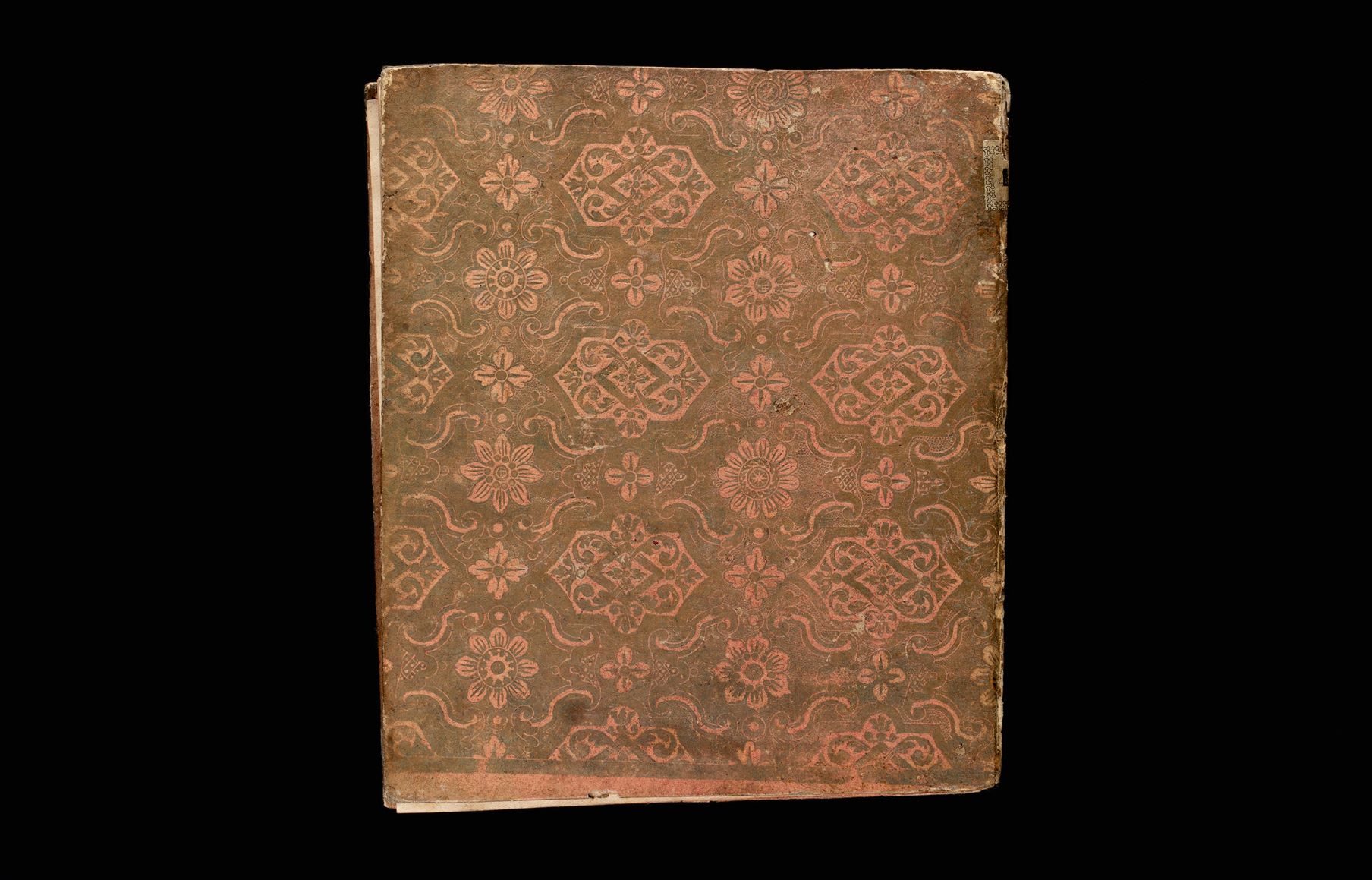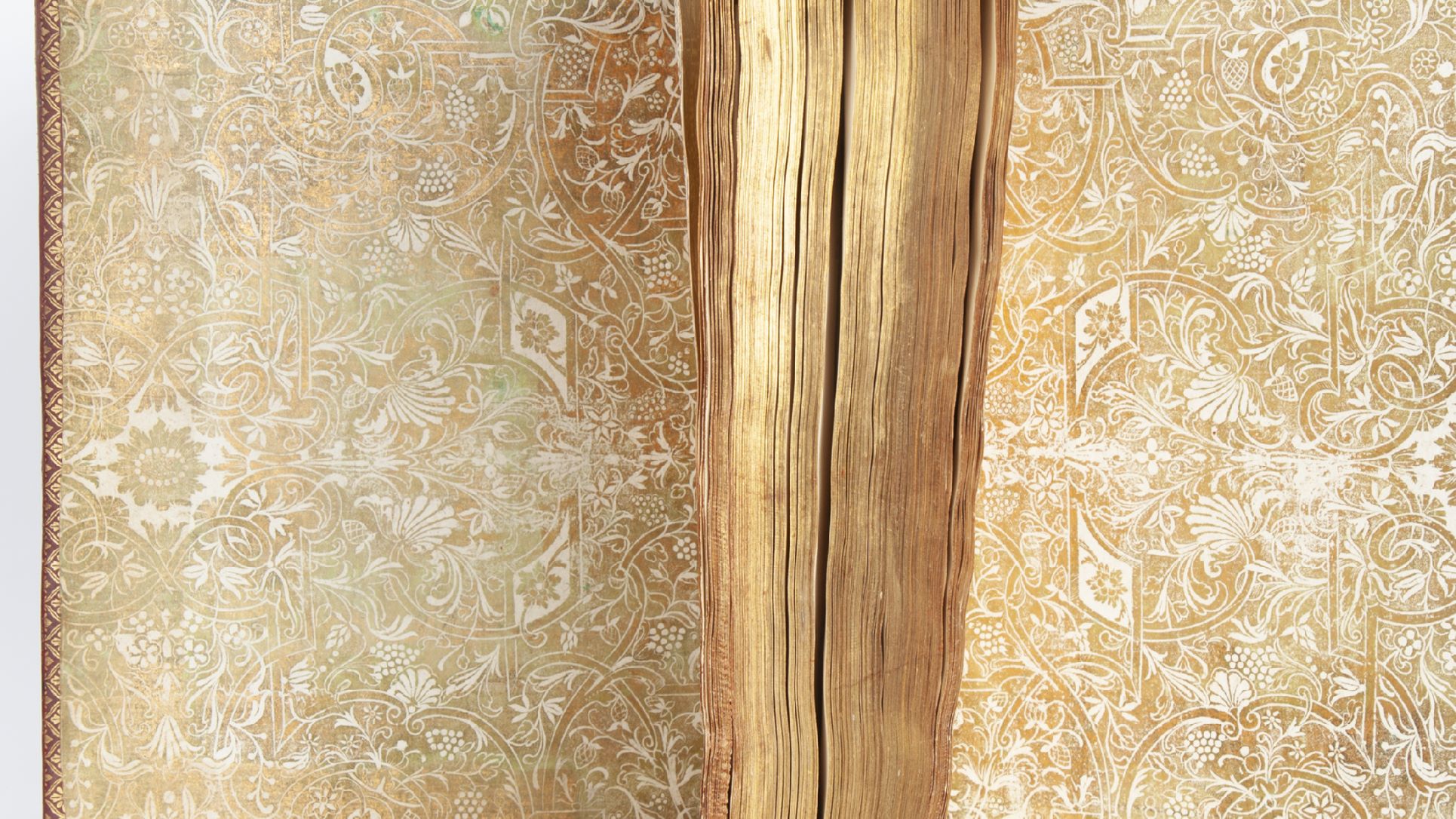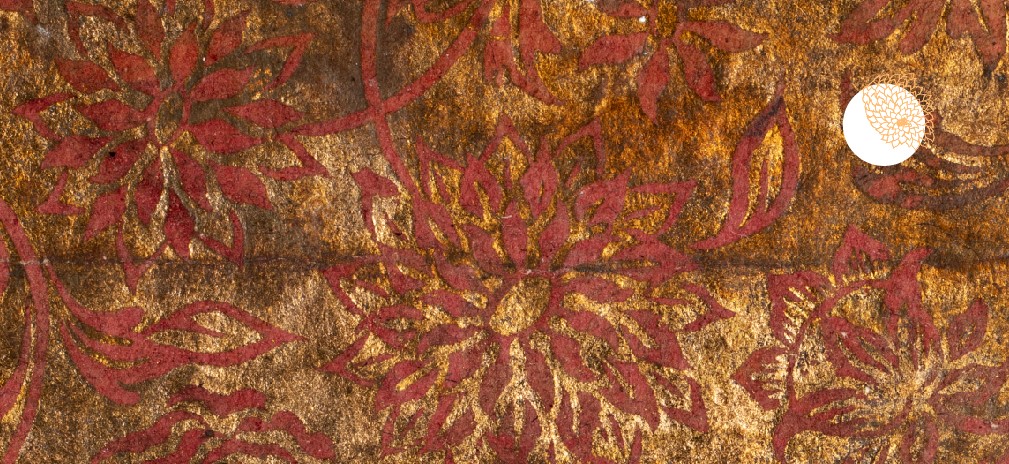VU Library presents the last part of a virtual exhibition “Tales of Decorated Paper” showing a decoration technique to produce golden brocade paper. After exploring the patterns made with the help of this technique, you will feel as if you are traveling through a luxurious illuminated garden, where you will recognize plant species, shapes, flowers, see some animal or even human silhouettes – all covered with golden dust. What is this specific decoration technique that promises so many exciting discoveries?
Brocade paper, similarly to marbled paper, was created while searching for some substitute to costly and exceptional fabrics. Such paper imitated brocade fabric and served as a much cheaper alternative to use in decoration of various objects – boxes, pieces of furniture, clocks, musical instruments and books. The brocade itself is a multi-coloured jacquard, usually decorative fabric made of natural silk or chemical fibre yarn with a pattern that can be woven or embroidered with gold, silver or other metal yarns. Although in Europe brocade fabric was immensely popular in the Renaissance period, the imitating paper appeared sometime later – at the end of the 17th century. In some part this is related to technological novelties; metal engravings and, in comparison with the block-printing decoration technique, strong pressure that could be done by using an etching press (as it was already applied in graphic arts) were necessary for the decoration of brocade paper.
Luxurious brocade paper eventually became a distinctive part of book decoration. One of the most popular brocade paper patterns is floral motifs of various, often exotic flowers. In the 18th century nature is increasingly sought to be portrayed realistically. This trend is partly reflected in the decoration of fabrics and paper. Among the most common motifs were chrysanthemums, pomegranates, grapes, roses, carnations, and tulips. Real or fantastic animals and even human silhouettes can also be found on brocade paper.
 A cover decorated in brocade technique. Taken from ‘DROGA ORŁA NA NIEBE...’. Vilnius, 1724. Photo: R. Malaiška
A cover decorated in brocade technique. Taken from ‘DROGA ORŁA NA NIEBE...’. Vilnius, 1724. Photo: R. Malaiška
From the end of the 17th century, the most distinguished guilds of such paper were founded in the German towns and cities. The most famous guild was situated in Augsburg; because of that brocade paper is in some sources referred to as Augsburg paper.
A series of virtual Tales of Decorated Paper that lasted more than a month has been completed with the story A Golden Garden. Brocade Paper. A five-part story invites to explore examples of block-printed, sprinkled, marbled, paste and brocade paper, to admire both the ornaments of patterns and the ingenuity and creativity of creators and decorators of the early book, and to feel the subtlety of the craft of decoration. Carefully selected exhibition material from VU Library collections shows vivid and creative play of imagination, manifesting itself through the arrangement of various motifs into elaborate ornaments created by both complex and simple means at hand.
 Ornate brocade endpapers. Taken from ‘HISTOIRE GÉNÉRALE D'ALLEMAGNE’, vol. I by Joseph Barre. Paris, 1748. Photo: R. Malaiška
Ornate brocade endpapers. Taken from ‘HISTOIRE GÉNÉRALE D'ALLEMAGNE’, vol. I by Joseph Barre. Paris, 1748. Photo: R. Malaiška
A Golden Garden. Brocade Paper is hosted on Google Arts and Culture and can be accessed by clicking on this link.
Other stories:
A Pacing Woodblock. Block-printed Paper – Available here
A Swarm, Landed. Sprinkled Paper – Available here
A Ripple, Captured. Marbled Paper –Available here
A Soft footprint. Paste paper – Available here
Original idea of “Tales of Decorated Paper” and research by Ieva Rusteikaitė. Creators and contributors to the exhibition: Gediminas Auškalnis, Gediminas Bernotas, Kristina Gudavičienė, Nijolė Klingaitė-Dasevičienė, Raimondas Malaiška, Vida Steponavičienė, Marija Šaboršinaitė, Jonė Šulcaitė-Brollo. We would like to express our special gratitude to the head of the VU Museum of Zoology, Dr Grita Skujienė.
2021-10-12

